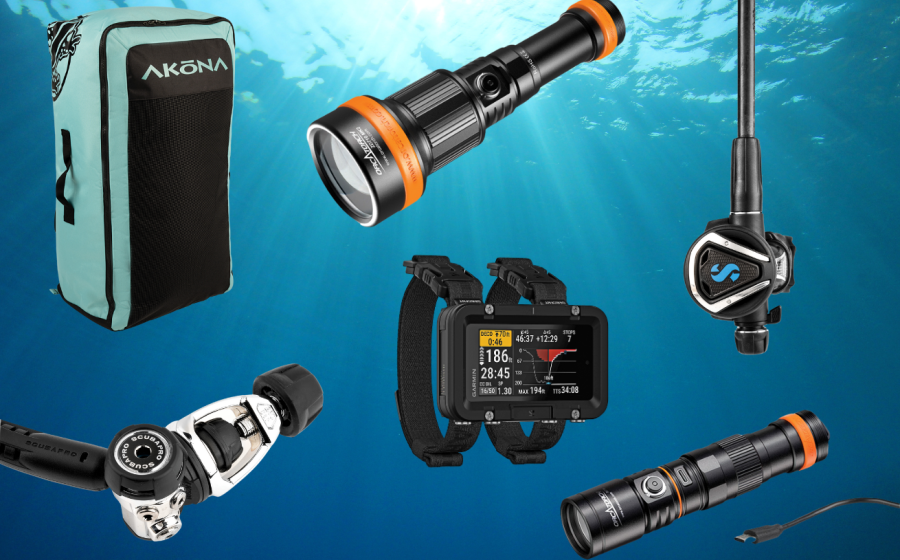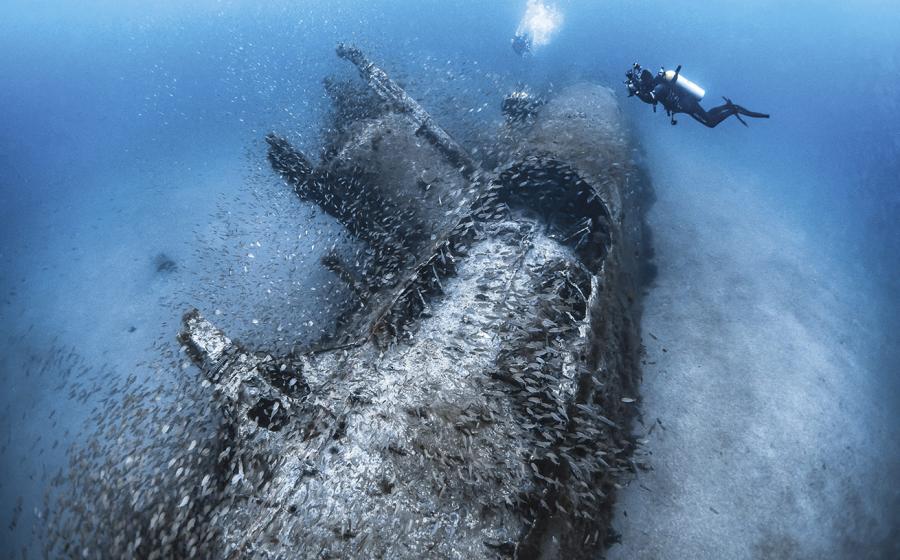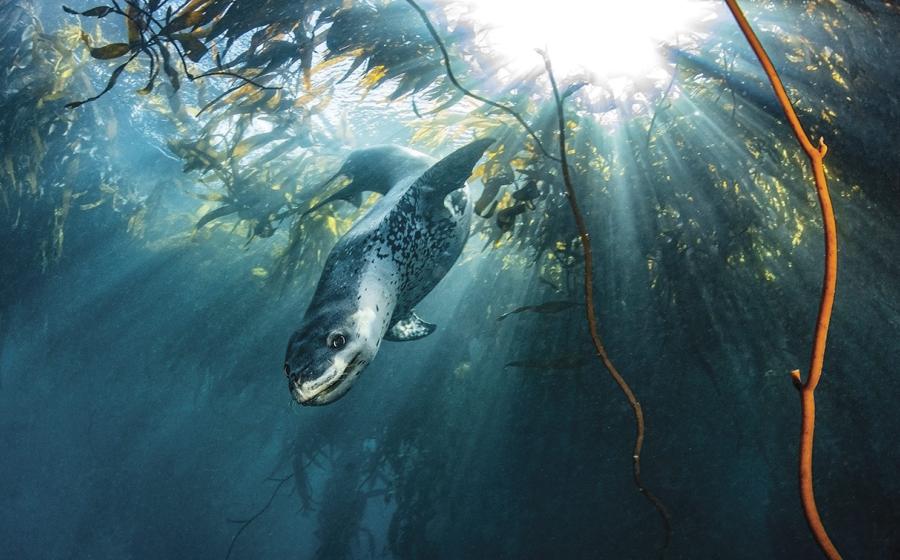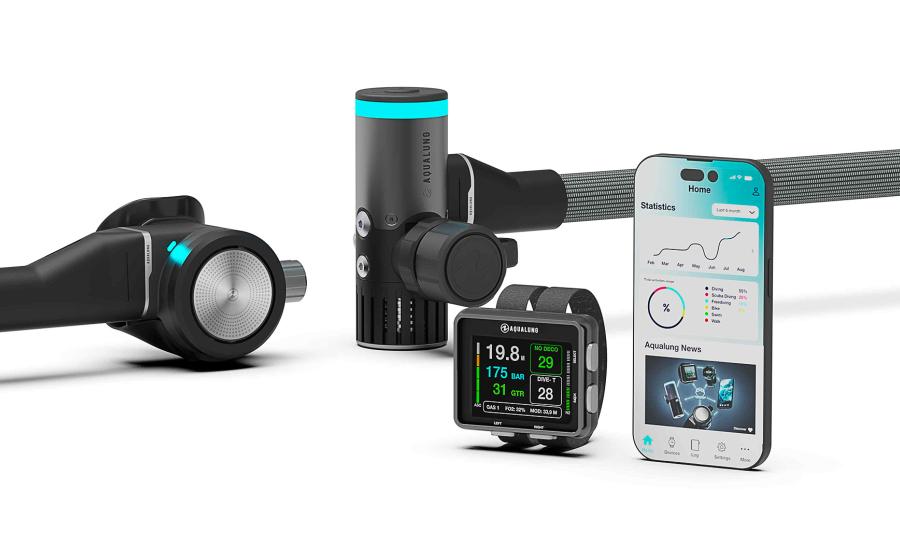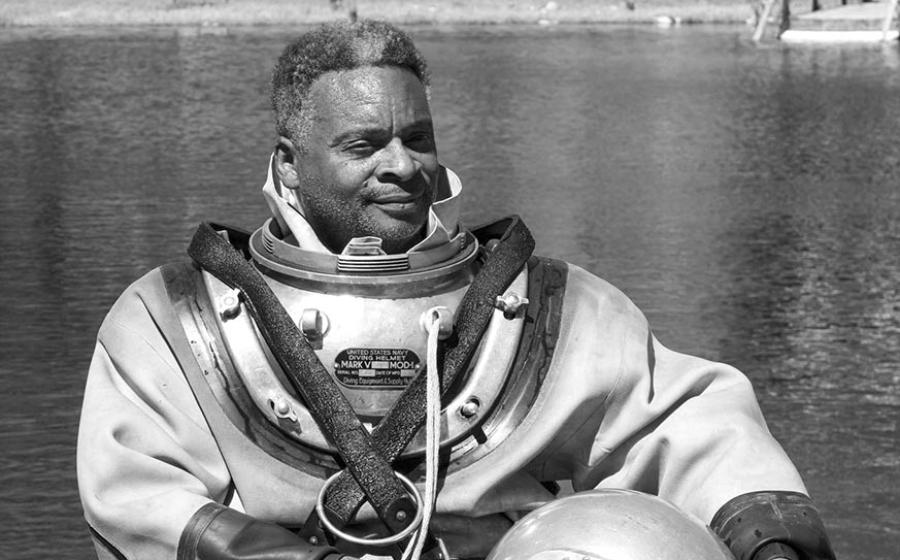10 Best Places To Scuba Dive With Schooling Fish
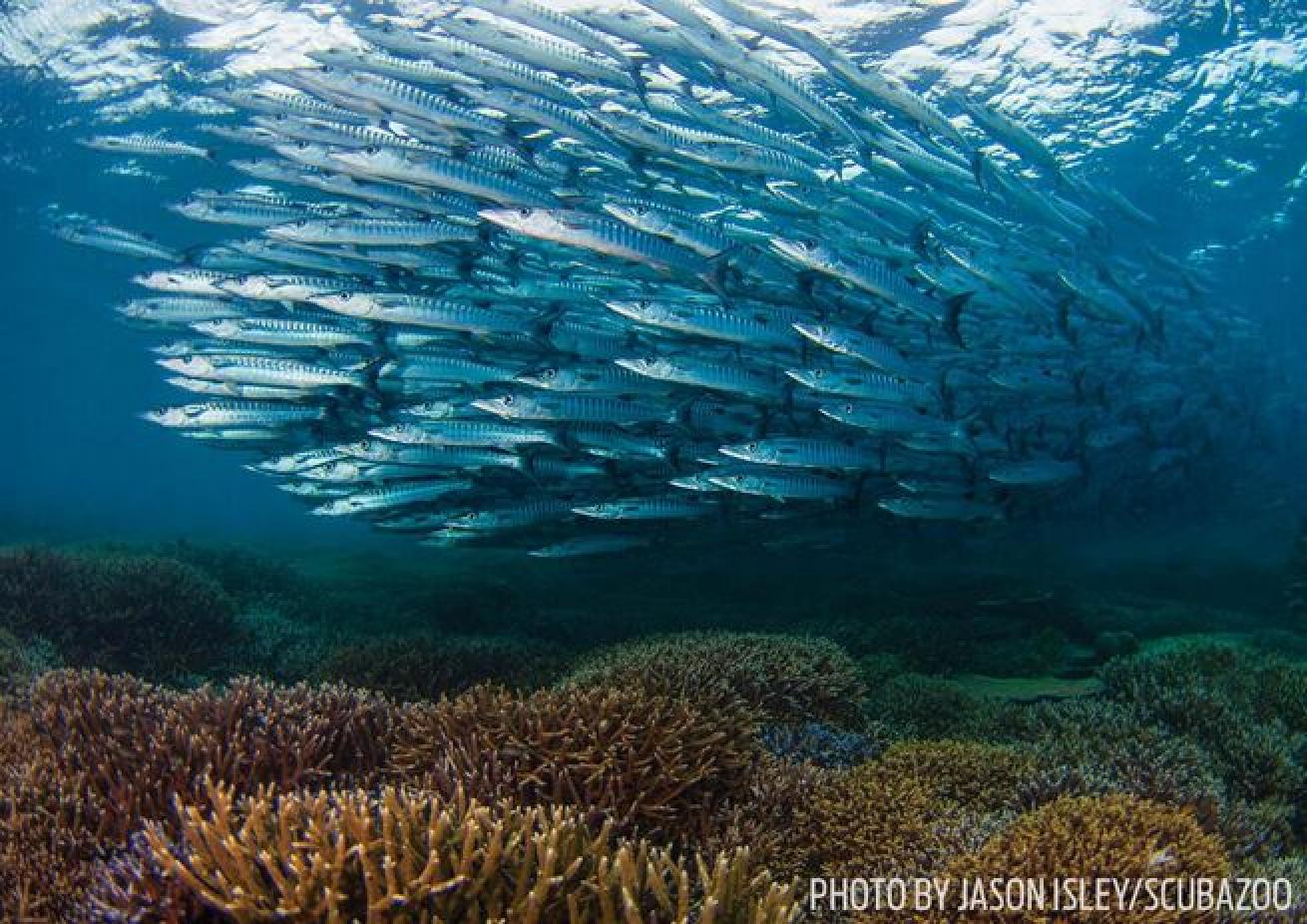
Jason Isley/ ScubazooFish Tornado
"To swim inside the tornado, my divemaster taught me to move slowly and approach from the bottom."
1. Sipadan, Malaysia
Nearly every dive story written about Malaysia opens with a shot of schooling chevron barracuda curling seductively around a diver. They’re all taken at Sipadan Island’s Barracuda Point, found off the island’s northeast tip in the Celebes Sea.
But take note: The site is for advanced scuba divers given the fish appear only when a strong current does.
Check out this video of fish schooling in Sipadan
And when conditions stack up favorably, so do the fish.
“To swim inside the tornado, my divemaster taught me to move slowly and approach from the bottom,” says Simon Chong, of Sipadan Dive Team, based in the town of Semporna, which visits a handful of sites that also attract this same phenomenon, plus jacks and sharks.
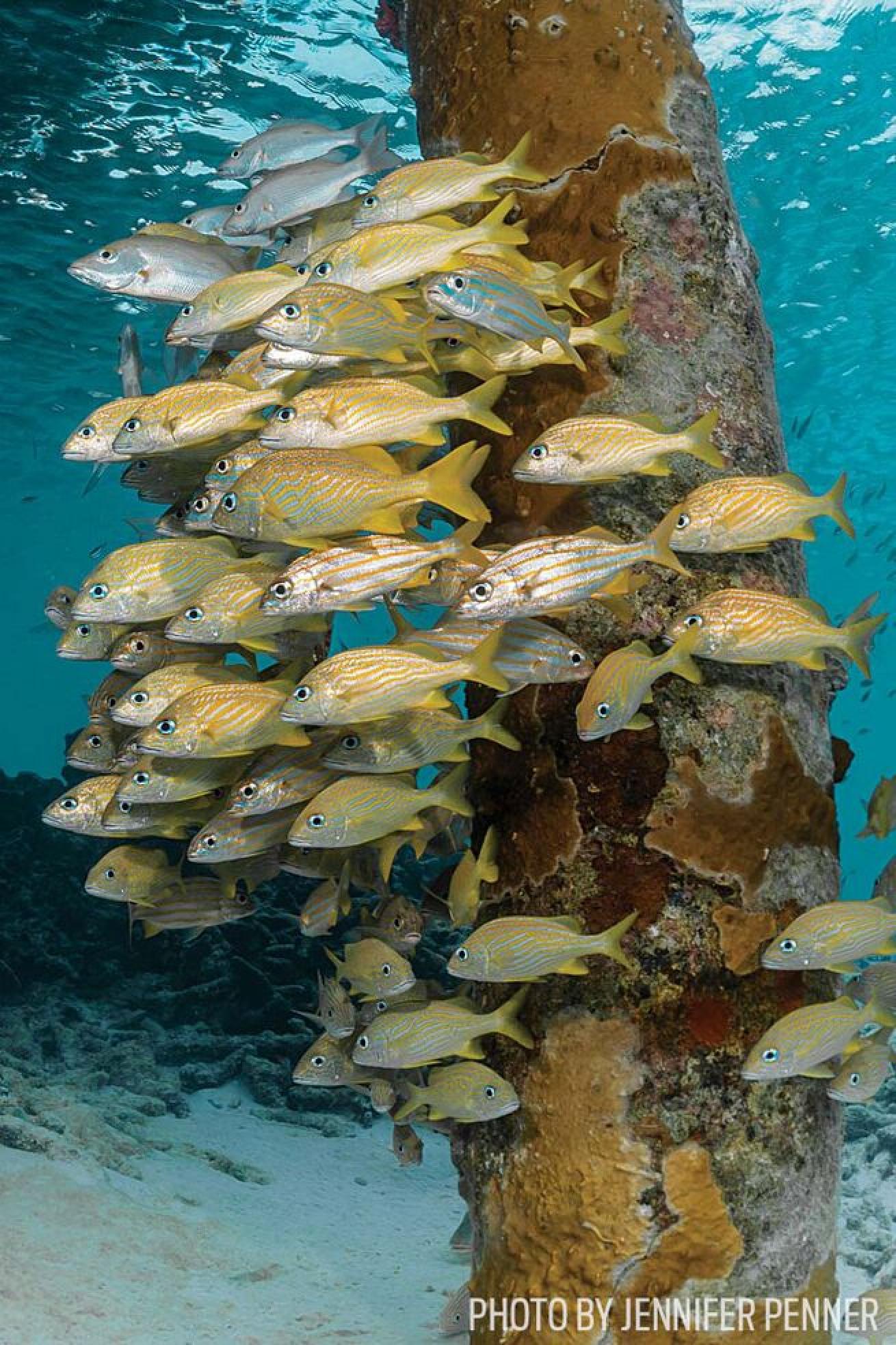
Jennifer PennerIt's A Pier Thing
But when you time the dive right, you'll find massive schools stacking up under the pier supports.
2. Bonaire
Dive the Salt Pier of Bonaire midday and you won’t find fish schools. This dive site, found on the southern leeward coast of the Dutch island, is known for a host of juvenile reef fish, octopuses and eels, and a host of snappers — culebra, mahogany and schoolmarm — that gather by the hundreds only at dawn and dusk.
“When the hunting parties form in the day, the snapper dissolve into smaller groups to become bottom dwellers,” says Ger Boermeester, divemaster at Plaza Dive Resort.
But when you time the dive right — most dive shops provide trucks, tanks and everything else necessary to dive at all hours — you’ll find massive schools stacking up under the pier supports.
Says Boermeester, “It’s one of the island’s most impressive sights.”
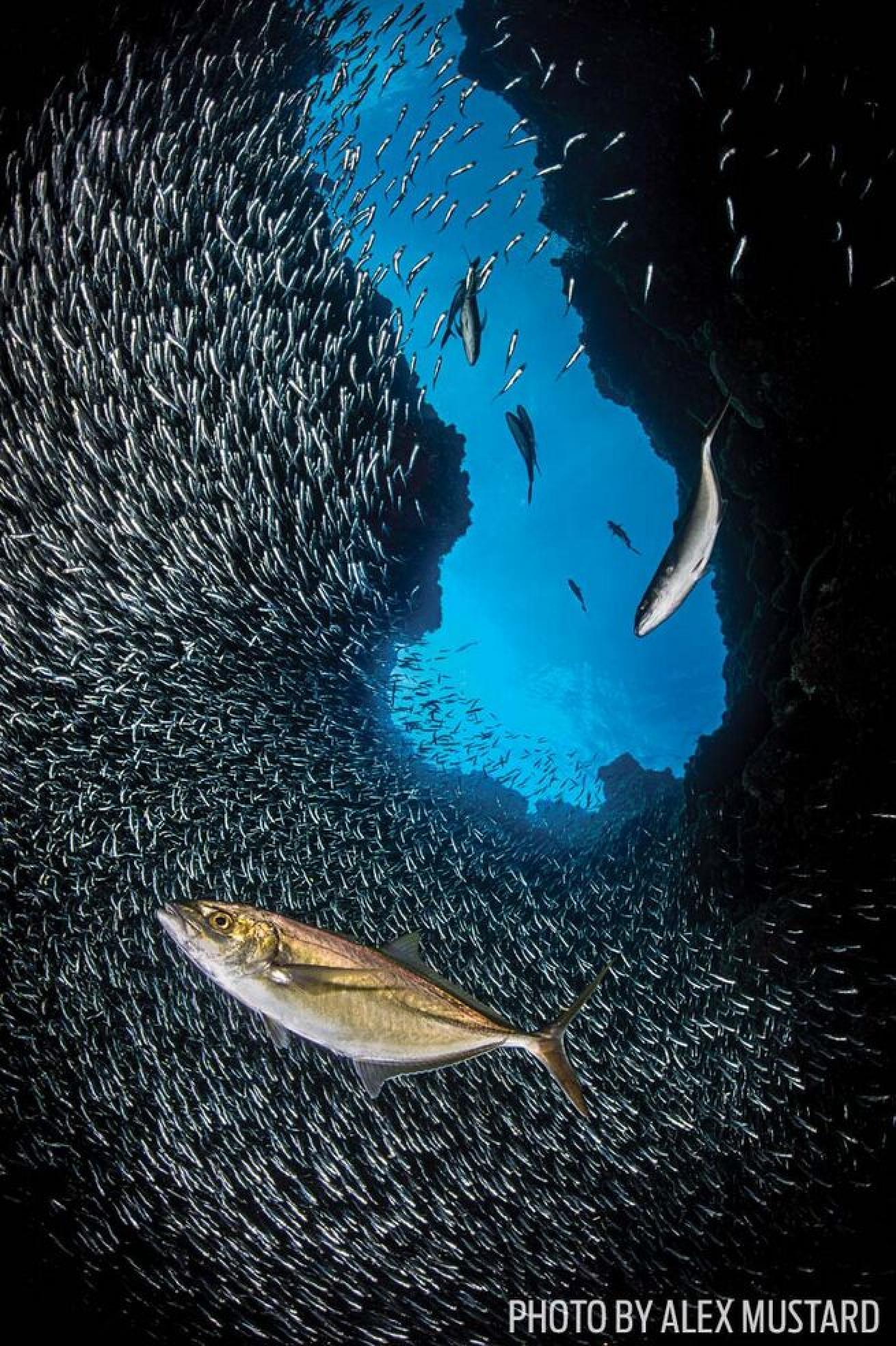
Alex MustardA Silver Rush
Part the curtain of schools at any dive site featuring caverns, recesses or gullies.
3. Grand Cayman, Cayman Islands
Every June, blooms of hardhead silversides — 4-inch-long baitfish — fill the nearshore waters off all three Cayman islands, but the biggest action happens off Grand. Part the curtain of schools at any dive site featuring caverns, recesses or gullies.
“You have this doorway full of fish,” says Craig Rowland, manager of the new Reef Divers location at Cobalt Coast Resort, of the fish formations that congregate in the archways and grottoes of the island’s iron shore .
“As you swim toward it, the shoal scatters and a barracuda you never saw coming darts at you,” he says. “It can be shocking.”
But, like confetti settling after midnight on New Year’s Eve, the fish soon waft back into their calmer positions.
“And just like that,” says Rowland, “the door closes behind you.”
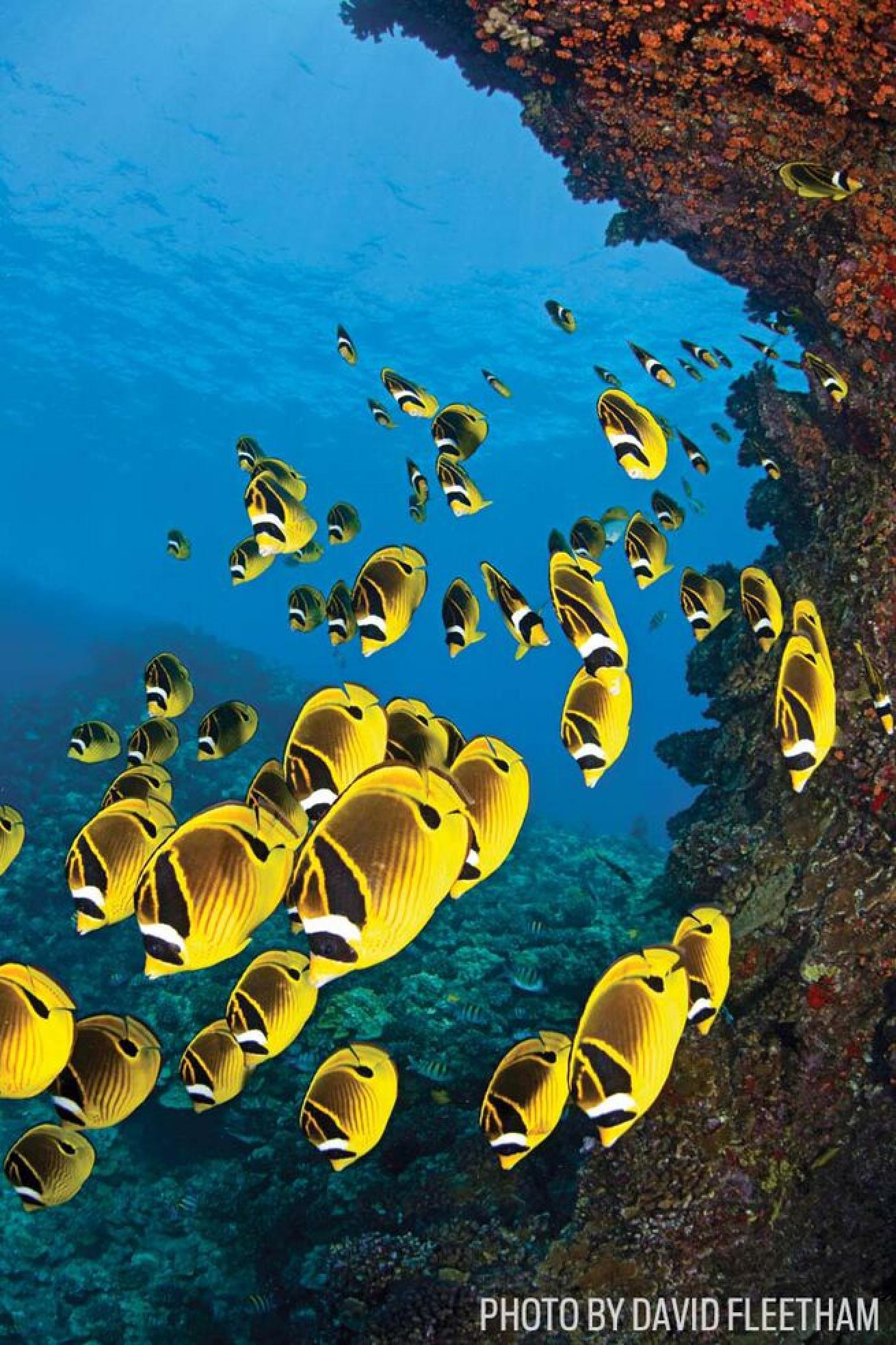
David FleethamSocial Butterflies
For raccoon butterfly fish, school is always in session at Lanai's signature site First Cathedral.
4. Lanai, Hawaii
For raccoon butterflyfish, school is always in session at Lanai’s signature site First Cathedral, which has stunning lava-tube caverns and a pair of pinnacles.
The dive site has a massive lava chamber laced with cutouts; as the sun streams through these reef “windows,” it creates a stained-glass effect. Capt. Steve Juarez, owner of Dive Maui, says butterflyfish follow divers after they’ve come through an opening called Shotgun, or Torpedo Tube.
“When we swim through Shotgun, we let the surge push the divers out,” says Juarez. “You come to a wall covered in purple egg patches of sergeant majors. The raccoon butterflyfish are hoping the divers will distract the sergeant majors so they can feed on their eggs. It’s like a halo of fish around the divers.”
The tactic works. The sergeant majors chase the divers, and the butterflyfish swoop in to get an easy meal.
5. Raja Ampat, Indonesia
“You don’t want to be a plankton rushing toward a reef on Raja Ampat,” says underwater photographer and former marine biologist Ethan Daniels. “A reef there is nothing more than a wall of mouths.”
The rule of thumb: The greater the current, the greater the amount of plankton and the greater the number of anthias, especially at Cape Kri in the Dampier Strait and Kaleidoscope off Misool. Fish that move the fastest can feed away from the reef. Damsels and anthias stay close, and it’s the anthias that steal the show.
“They’re the epitome of a tropical reef fish in terms of color,” says Daniels of their orange and hot-pink hues. “Their color is almost beyond what you’d expect to see in nature.”
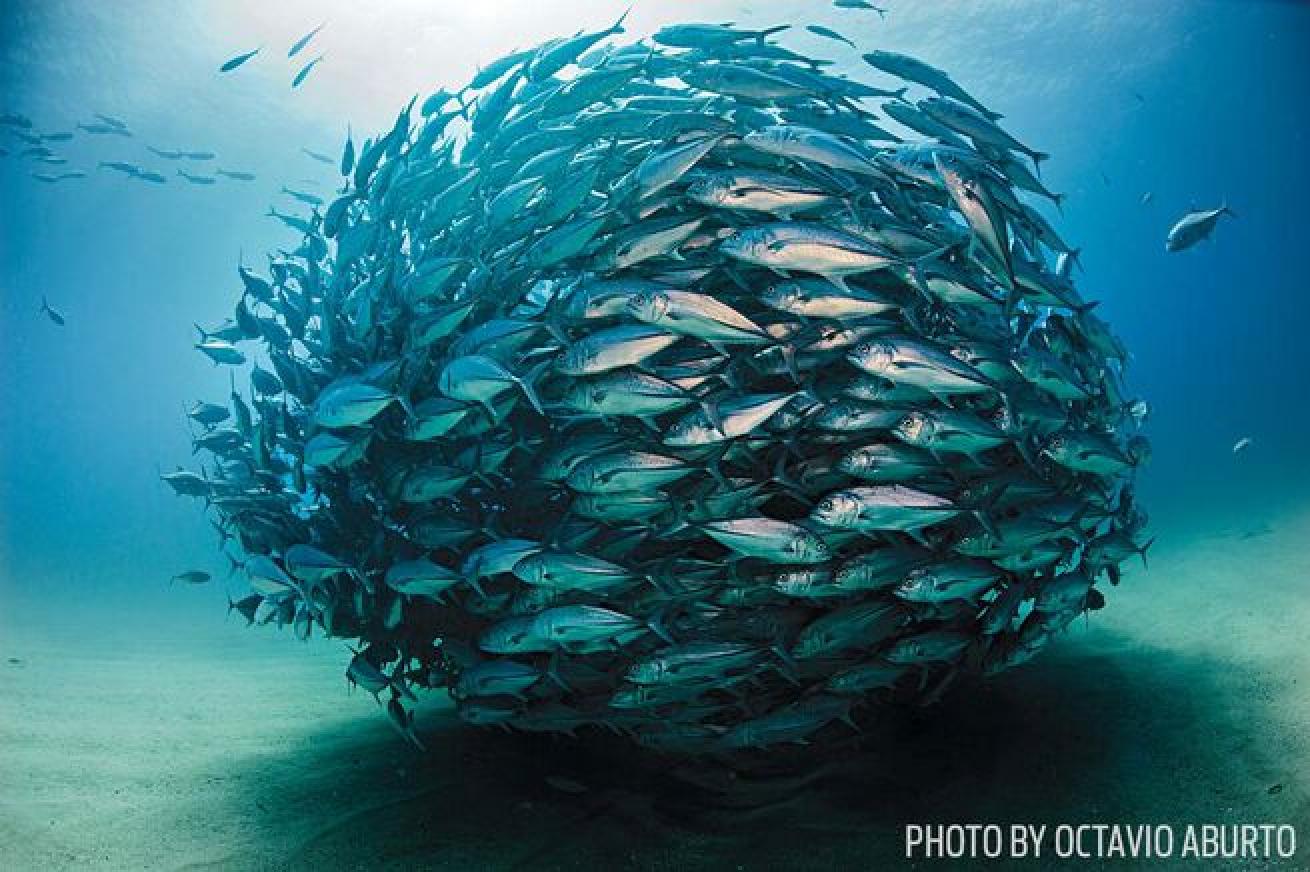
Octavio AburtoPlaying Field
Finding the schools can't be pinned to one location, but they're often seen at the dive sites El Bajo and Los Morros
6. Cabo Pulmo, Mexico
Most divers have heard the reports that the trevally schools off Mexico’s Cabo Pulmo — a town on the Baja Peninsula’s southeast tip — are the size of football fields.
But Daniella Barti, who works at Cabo Pulmo Beach Resort, finds the claims ridiculous.
“Oh, no — they’re the size of tennis courts,” she says.
Regardless of how you measure them, they’re proof that the area’s marine park conservation efforts, effected in 1995, have fostered the return of these schools. Finding the schools can’t be pinned to one location, but they are often seen at the sites El Bajo and Los Morros — in numbers considerable enough to conjure comparisons to playing fields, football or otherwise.
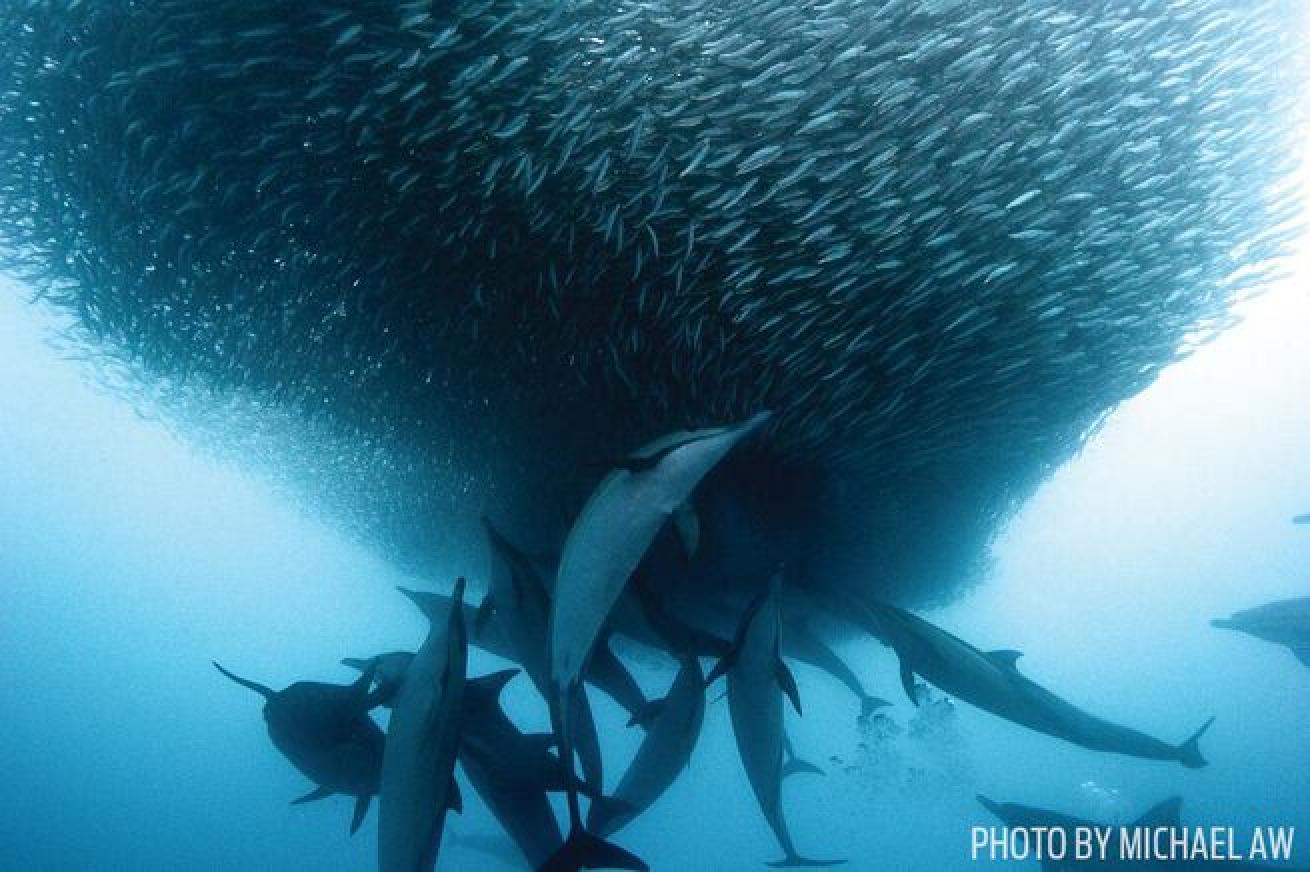
Michael AwSardine Spectacle
Dolphins hunt baitfish off the coast of Mozambique.
7. Mozambique, Africa
The phenomenon of baitfish funneling north along South Africa from May through August is one of diving’s most epic events, and it’s all thanks to a small, oily fish.
The sardine run attracts tiger, bull and leopard sharks, to name just a few species, as well as killer whales, dolphins and humpback whales.
Says Steve Mank Counsel, owner of Peri-Peri Divers, based in Tofo Beach, Mozambique, “You need to make space. The bull sharks are reluctant and will stay away if you don’t keep a distance.”
It’s a dance of compromise, but among the glittering chaos, you’re guaranteed a spectacle.
8. Galapagos, Ecuador
Whale sharks, hammerheads, fur seals, sea lions — these are the most hyped underwater draws of the Galapagos. Amid all that action, it’d be easy to overlook the jacks congregating in walls so thick they obscure the divers who nose their way inside.
The richness of life at this Pacific outpost, fed by the convergence of several currents, is expressed in massive schools of fish, which not only support the megafauna but serve as their own attraction.
Related Reading: The Joy of Swimming With Bali's Schools of Fish
9. Maldives
In the Maldives, there isn’t just one season when silver sprats, 4-inch baitfish, ply these Indian Ocean waters. Rather, you need only consider which time of year you’ll travel. The western half of the island nation explodes with these dark-blue and silvery-white species during the northeast monsoon, aka dry season, which extends January to April. The rest of the year, find them in the eastern Maldives, serving themselves up as hors d’oeuvres for passing bonito.
“Silver sprats are commonly found in the lagoons rather than in deeper water,” says Ibrahim Nazeer, dive center manager at Four Seasons Resort Kuda Huraa. “They are an incredible sight that guests can experience just a few steps from shore. Here, thousands of them can be seen swimming around a baby lemon shark, keeping a safe distance until the shark decides to hunt them.”
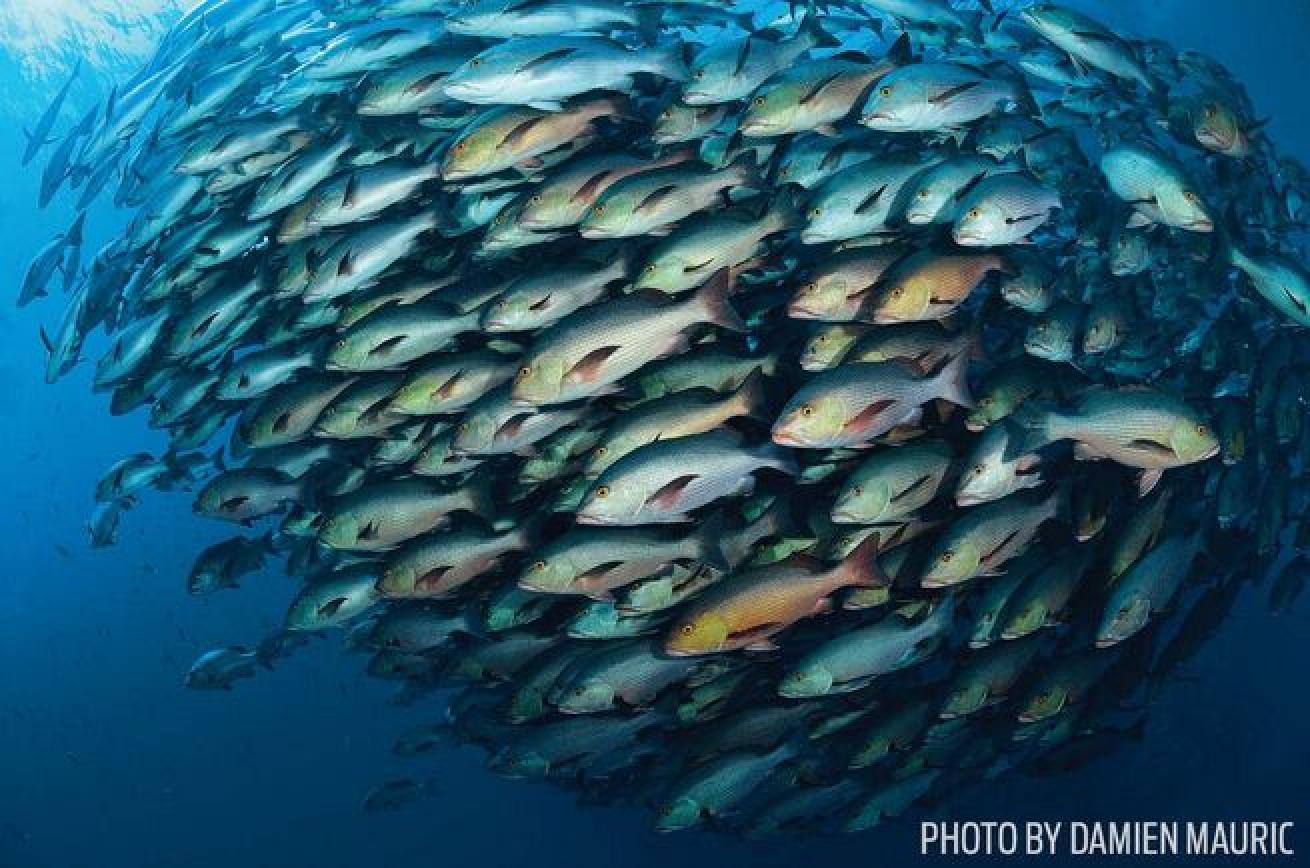
Damien MauricSynchronized Swimming
"Swim up to that school, and if you're not aggressive, they'll accept you. The fish part, and you find those caves and crevices opening up."
10. Marsa Alam, Egypt
Schools of fish in blue water always warrant a visit, but in the Red Sea, big numbers of big-eyed glassy sweepers, especially at sites such as Big Brother, Little Brother and Elphinstone off Marsa Alam, a town midway along the Egyptian coast, signal ledges, caves and caverns — a labyrinth you can work your way inside.
Sweepers are often found sharing their hiding places with cardinalfish and bigeyes, also nocturnal species. At night, sweepers forage for zooplankton, their primary food.
“Swim up to that school, and if you’re not aggressive but move slowly, they’ll accept you,” says Wayne Hasson of Aggressor Fleet. “All of a sudden, the fish part, and you find those caves and crevices opening up.” Says Hasson,
“Once inside, move your hand; the fish move with it like it’s a magic wand.”





